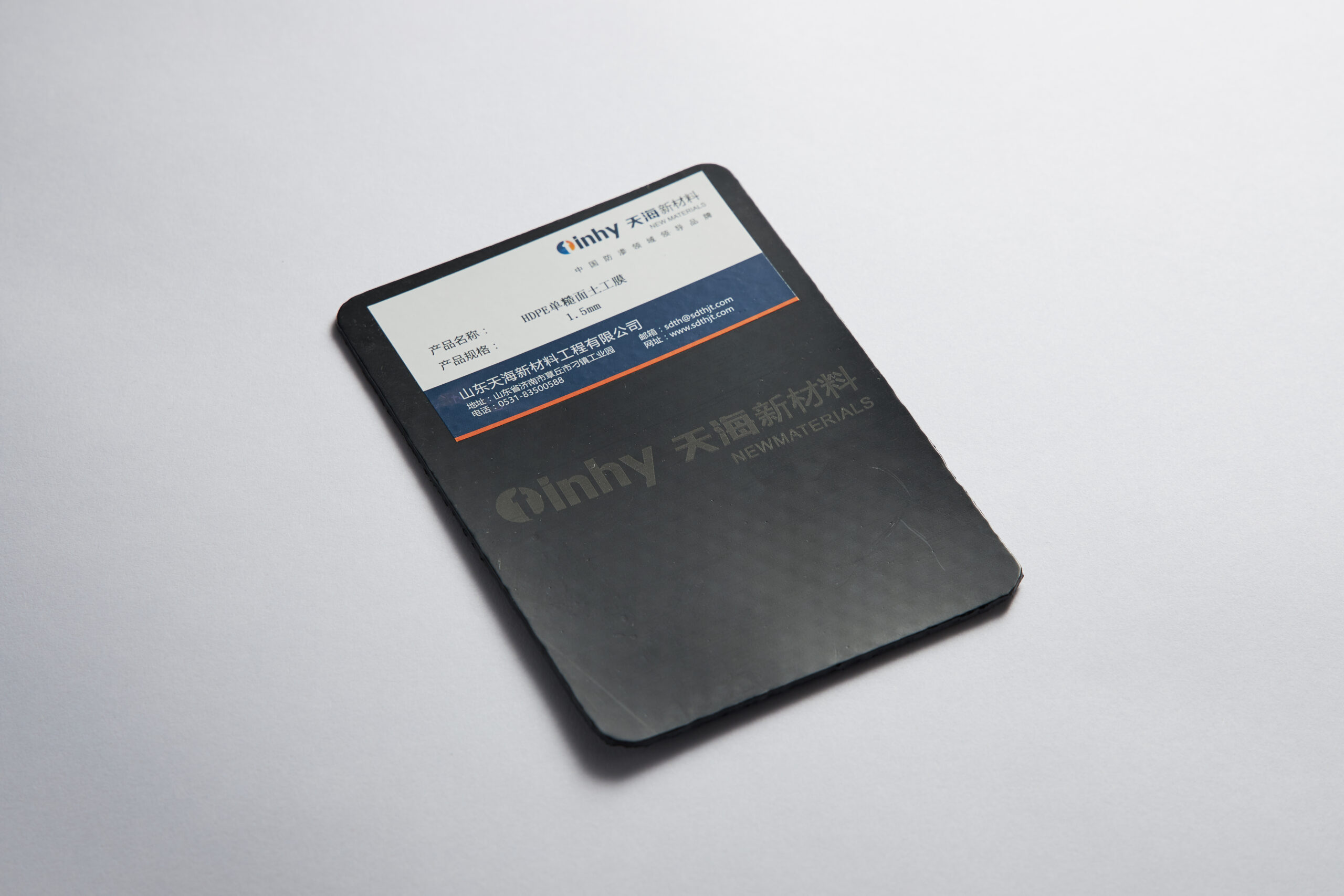Some key points of geomembrane impermeability
The impermeability of geomembrane refers to its ability to effectively prevent the penetration of water, solute and gas.
Barrier effect: Geomembranes prevent water and other liquid substances from entering or penetrating into soil or other media through its surface by having low permeability and high density. This prevents the spread of moisture and pollutants in the soil and protects the quality of groundwater resources.
Material selection: Geomembranes usually use polymer materials, such as polyethylene (PE), polypropylene (PP) and polyvinyl chloride (PVC). These materials have lower permeability and can provide better barrier properties.
Thickness and Density: The thickness and density of a geomembrane play an important role in its impervious properties. Thicker membrane material and higher density provide better penetration barrier and reduce the risk of leakage.

Seams and fixation: During geomembrane installation, the key is to ensure that the seams are sealed and the membrane is fixed. Proper joint preparation and fixation can reduce or eliminate leak paths and improve the impermeability of the geomembrane.
Durability: The geomembrane should have good durability and be able to maintain its anti-penetration performance under long-term use and different environmental conditions. It should be resistant to elements such as chemicals, UV radiation, temperature changes and physical damage.
In summary, the anti-permeability of geomembrane is achieved by selecting appropriate materials, controlling thickness and density, strengthening joints and fixing, and having good durability. Giving full play to the anti-permeability of geomembrane can realize effective control of moisture and pollutants in the fields of civil engineering, environmental protection and water conservancy engineering.
Some key points of geomembrane durability
The durability of geomembrane refers to its ability to maintain its performance and function under long-term use and different environmental conditions.
Material selection: The durability of geomembranes is closely related to the quality and characteristics of the selected materials. Common geomembrane materials include high-density polyethylene (HDPE), polypropylene (PP) and polyvinyl chloride (PVC). High-quality materials have high chemical corrosion resistance, UV radiation resistance and aging resistance, and are better able to adapt to harsh environments and maintain long-term stability.
Corrosion resistance: Geomembranes are usually used in some environments that require corrosion resistance, such as landfills, chemical plants, etc. A durable geomembrane should be able to resist attack and corrosion from chemicals to maintain its integrity and performance.
Anti-ultraviolet radiation: Long-term exposure to the sun’s ultraviolet rays may cause aging and damage to the geomembrane. Therefore, high-quality geomembranes should have good UV resistance to reduce deterioration and aging caused by sunlight.
Temperature effect: The geomembrane should be able to adapt to expansion and contraction under different temperature conditions. High-quality geomembranes have low temperature sensitivity and thermal stability, and can withstand extreme temperature changes without easily deforming or cracking.

Physical damage resistance: Geomembranes are often at risk of physical damage during construction, such as tears, punctures or scratches. Durable geomembrane should have high tear resistance, impact resistance and puncture resistance to reduce damage caused by external force.
Construction technology and quality control: The durability of geomembranes is also closely related to construction technology and quality control. Measures such as correct installation and construction technology, proper joint treatment, reasonable fixation and maintenance all have an important impact on the durability of geomembrane.
It should be noted that the durability of geomembranes is affected by many factors and will gradually decrease over time. Therefore, when designing and selecting geomembrane materials, the use environment, expected service life and maintenance requirements should be fully considered to ensure that the durability of the selected geomembrane can meet the engineering needs.
Author
-

Founded in 2002, Tinhy's team focuses on the manufacturing, marketing, installation, application and research and development of geosynthetic materials.
View all posts




